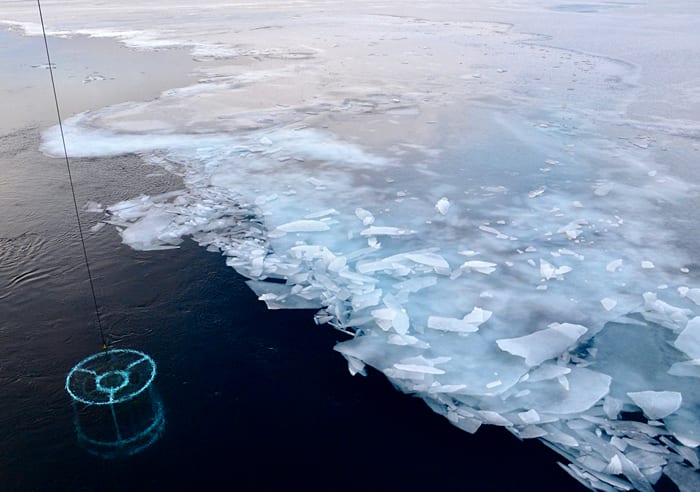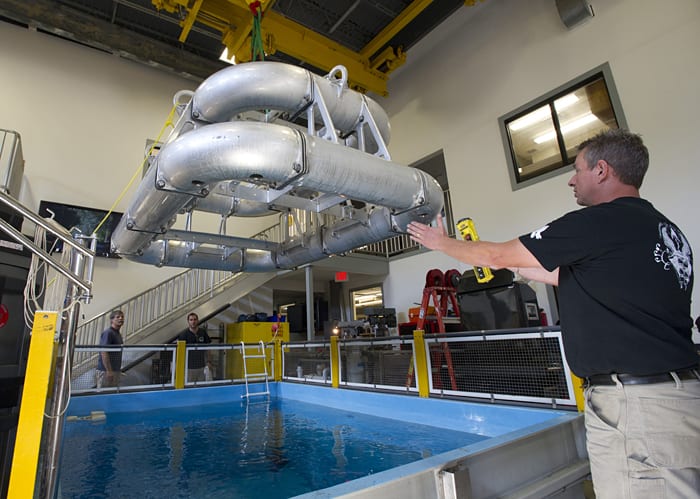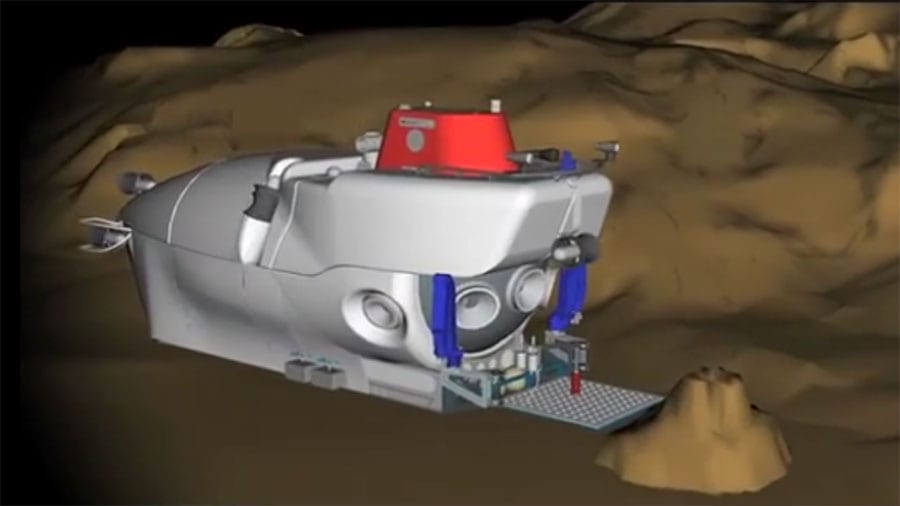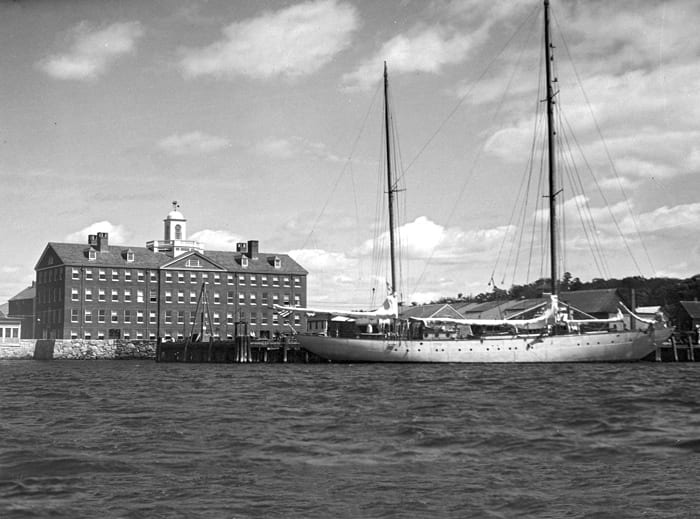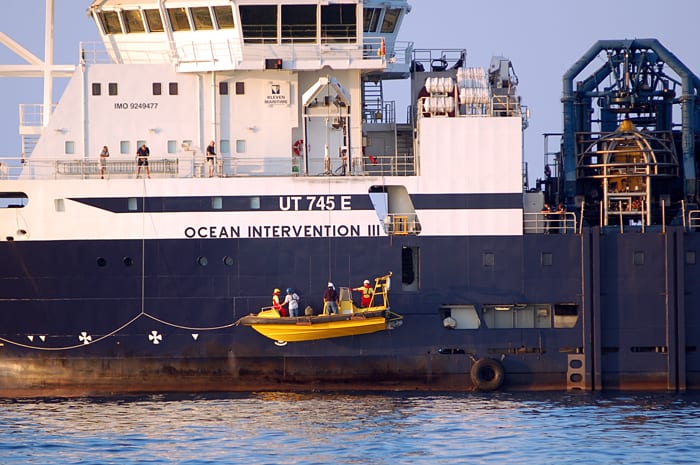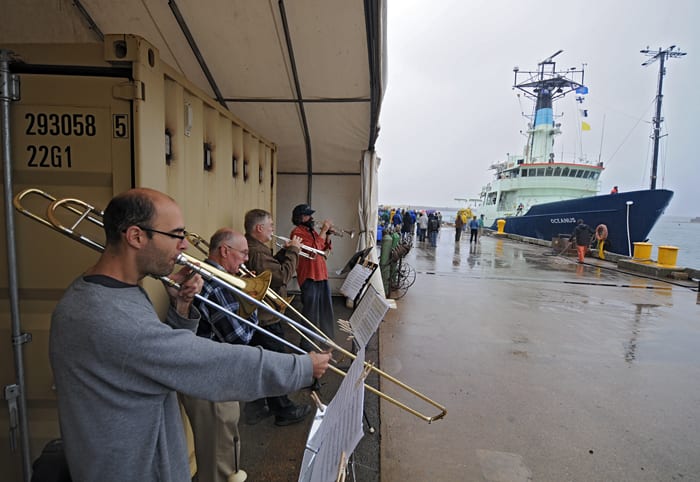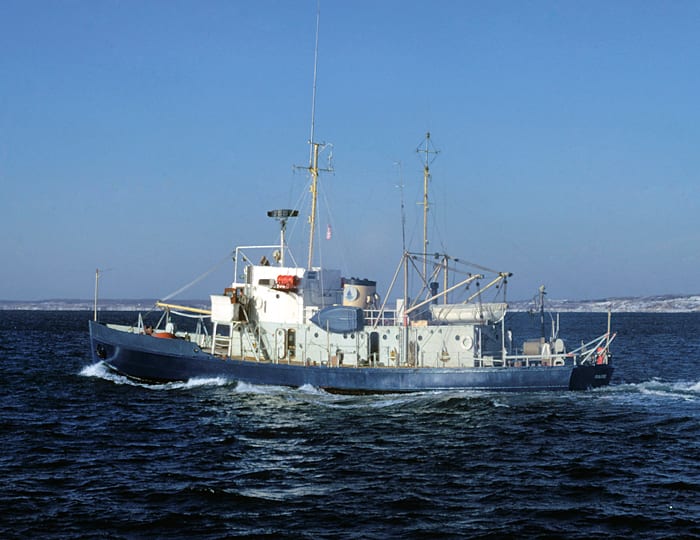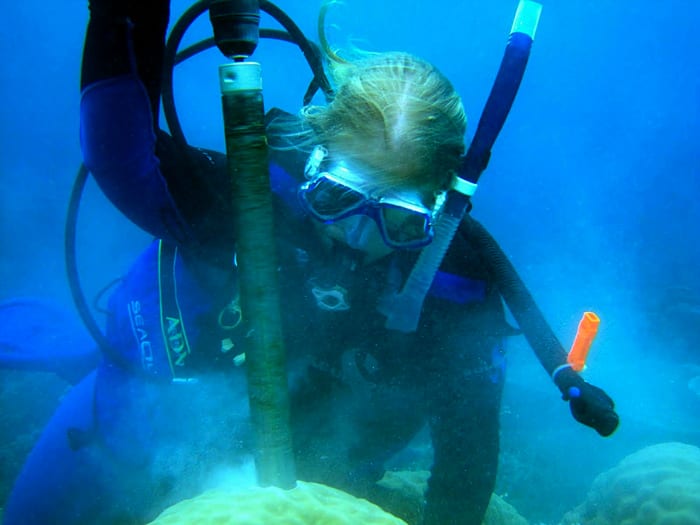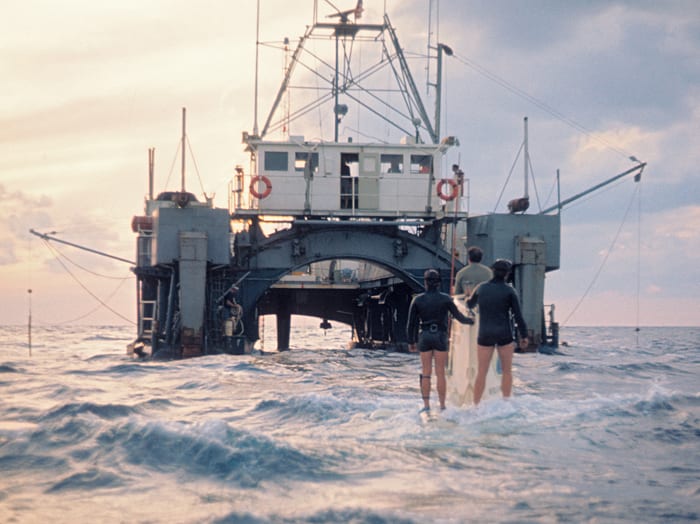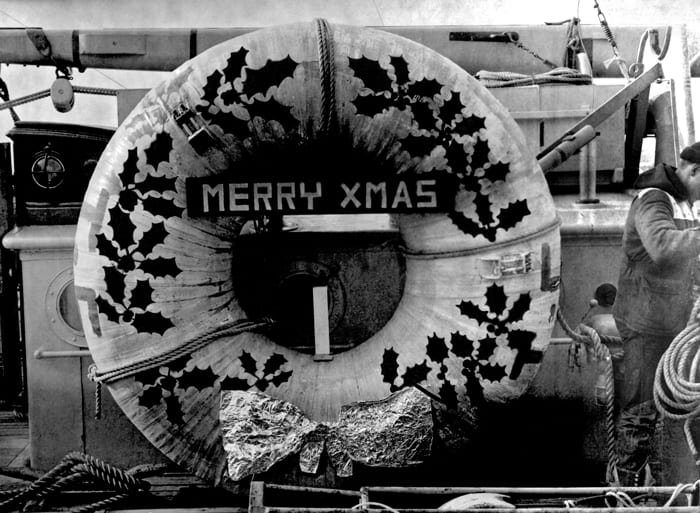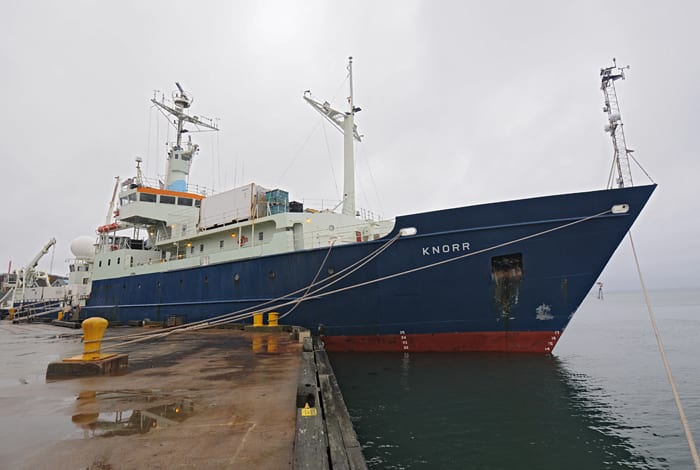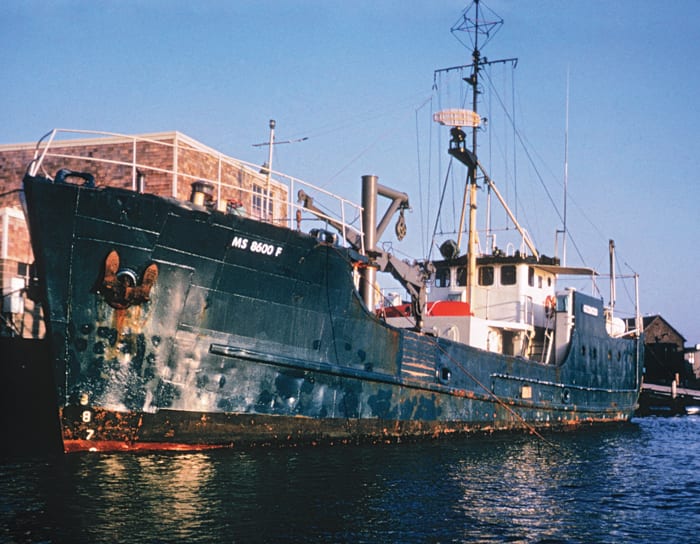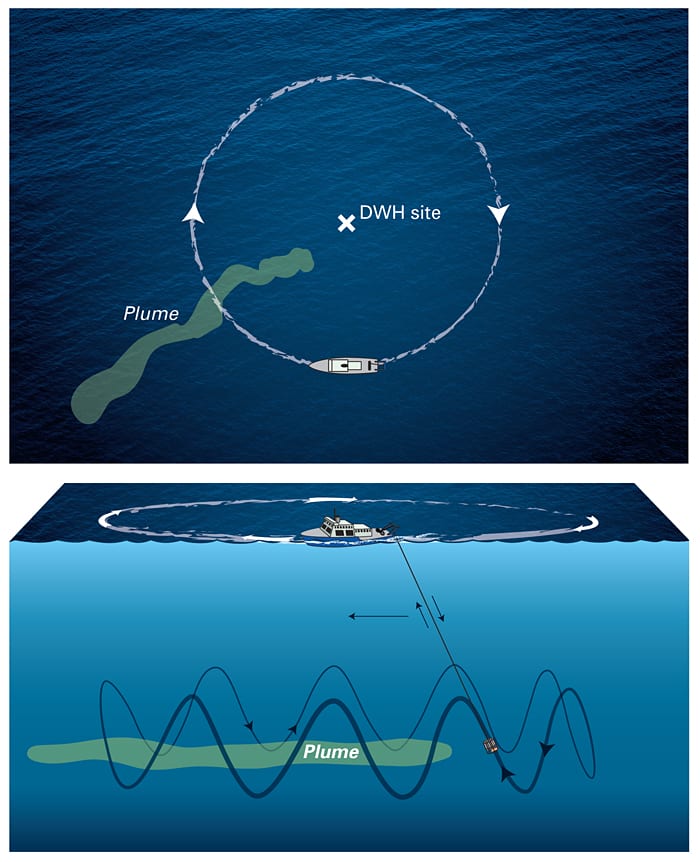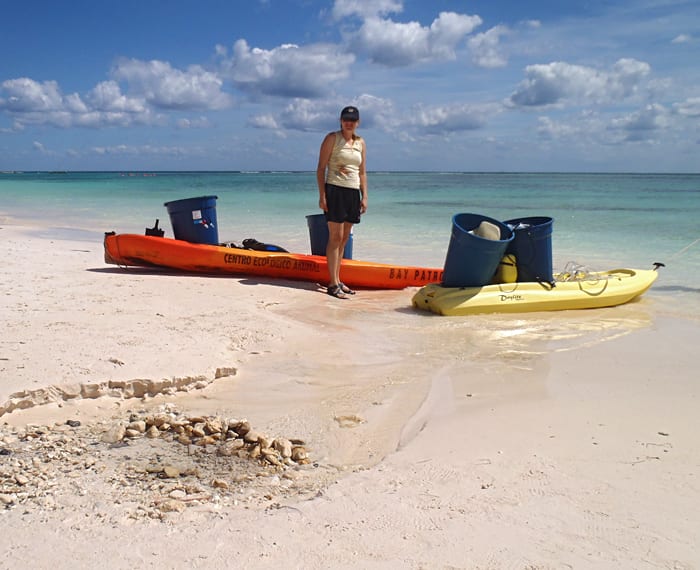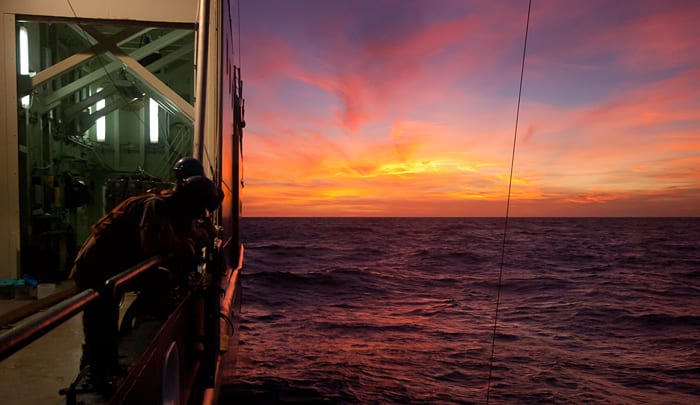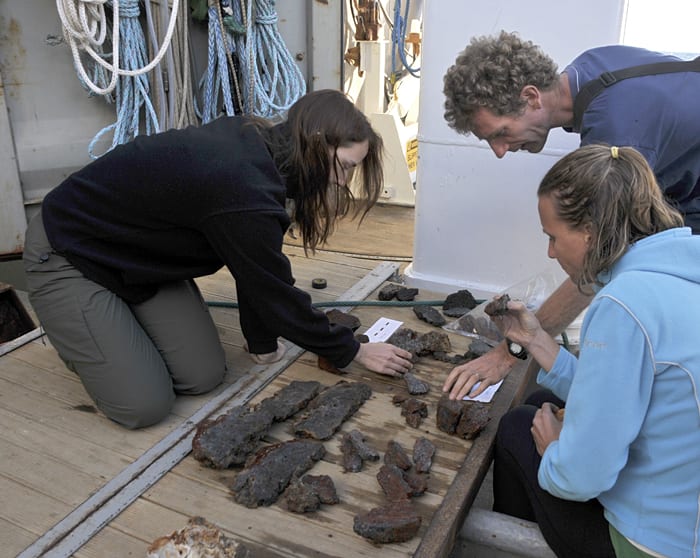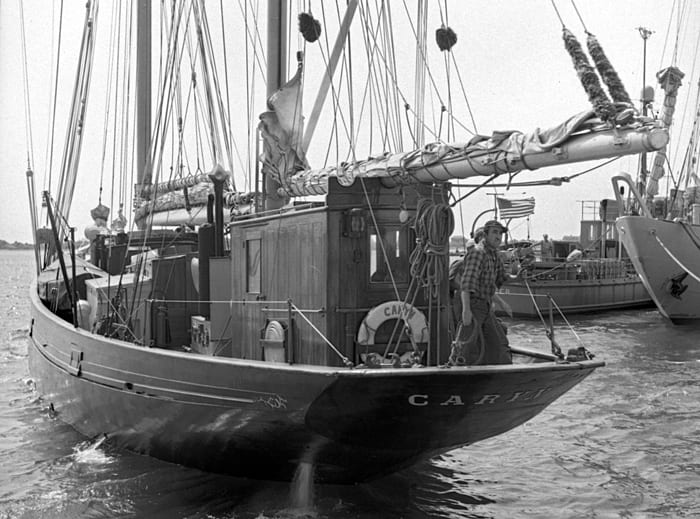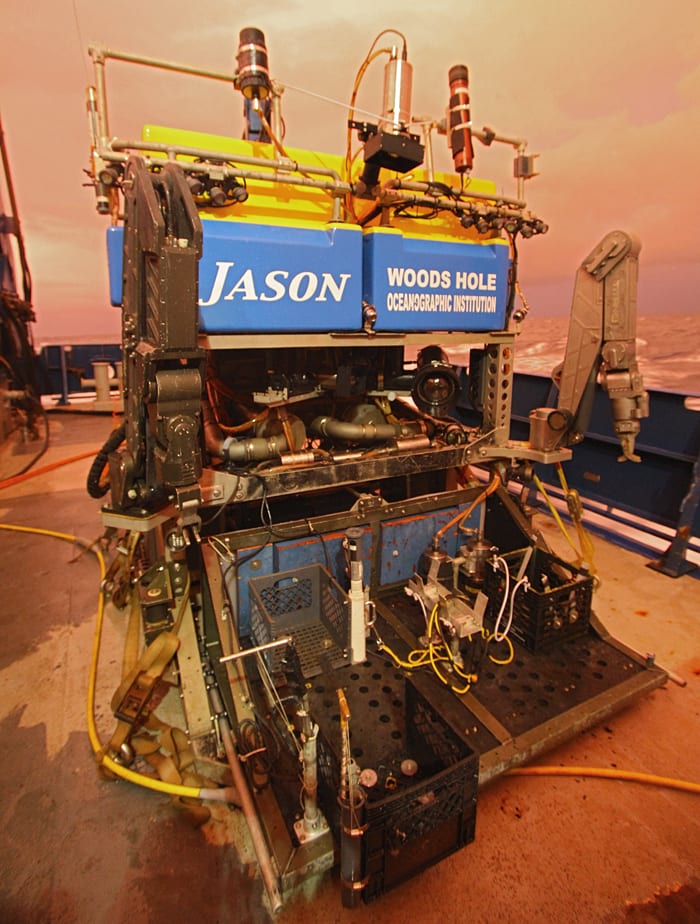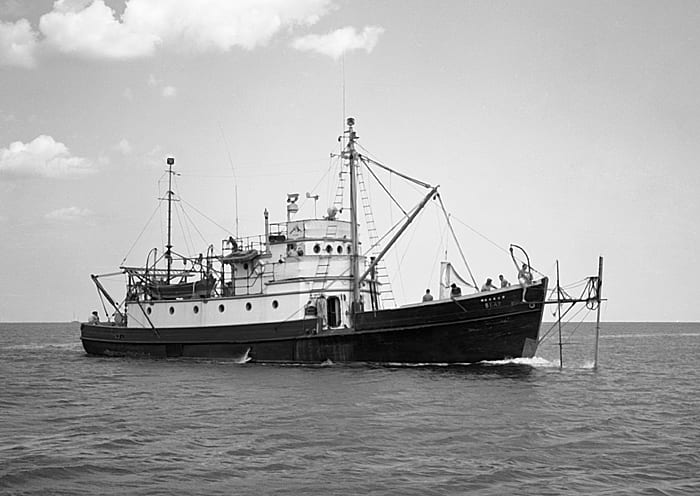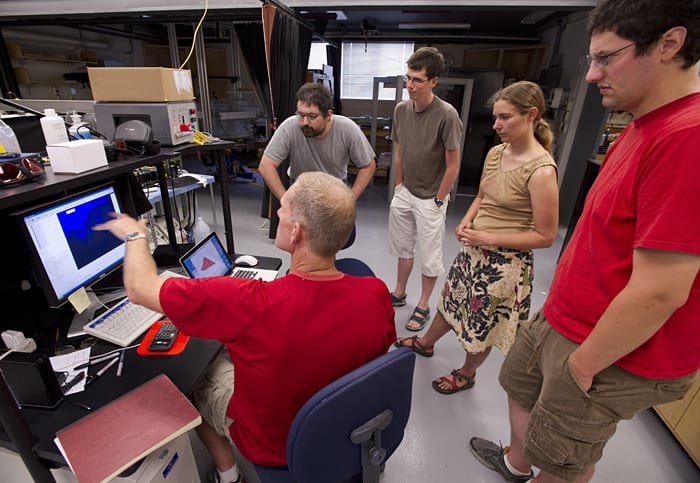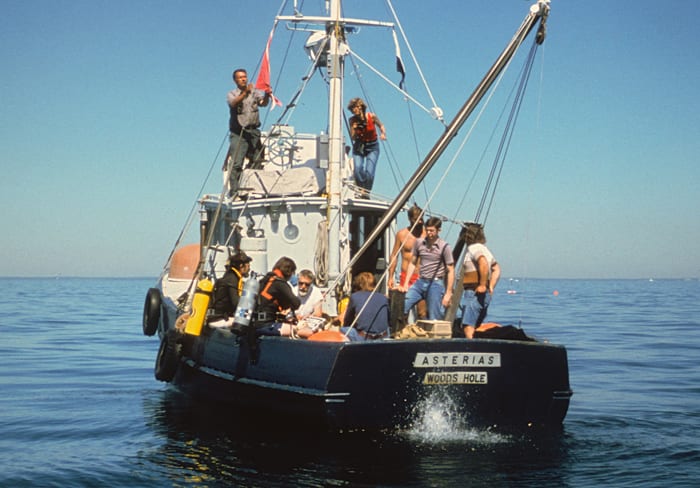Multimedia Items
Testing the Waters
In October, scientists and crew led by WHOI oceanographer Robert Pickart traveled to the Beaufort Sea aboard the US Coast Guard ice breaker Healy. They were carrying out part of a five-year study…
Read MoreFunny Name, Serious Mission
Engineering Assistant Jim Dunn (foreground) lowers a benthic acoustic release frame (BARF) into the test tank at WHOI’s Coastal Research Lab while colleagues Eric Drange (left) and Jeff Pietro observe.…
Read MoreAlvin Workspace Simulation
Alvin has two robotic arms that can manipulate instruments and obtain samples ranging from hard-rock geology to delicate biology
Read MoreInside WHOI
Woods Hole Oceanographic, the world’s largest, non-profit ocean science research and education institution.
Read MoreA Pair of Firsts
Atlantis, the first ship used at WHOI for multidisciplinary ocean research, docked in Woods Hole in the 1950s near the Bigelow Laboratory. (The building was the first built for the…
Read MoreTight Sampling Deadline
During the Deepwater Horizon oil spill in 2010, the U.S. Coast Guard arranged for a small group of WHOI researchers to be transferred from a research vessel in the Gulf…
Read MoreStrike Up the Band
Occasionally when a WHOI ship returns to Woods Hole, the Institution’s Brass Ensemble helps give the crew and science party a rousing welcome home. From left to right: Alex Dorsk…
Read MoreMany-headed Computer
Jeff Dusenberry stands in front of Scylla, a high performance computer cluster containing a total of 984 processors that was installed at WHOI in June 2011. Named after the many-headed…
Read MoreCrawford
Crawford, a former U.S. Coast Guard cutter, came to WHOI in 1956. Crawford made 175 cruises, worked in the North and South Atlantic, and carried specialized gear for studying hurricanes.…
Read MoreCoring Coral
Using SCUBA gear so she can remain submerged, Joint Program student Hannah Barkley drills into a coral colony in Palau to extract a core sample of the skeleton. Analyzing the…
Read MoreLulu
Though small, slow, and described by one author as looking a bit like a floating junkyard, Lulu secured a spot in WHOI history as the original support vessel for the…
Read MoreMerry Christmas from WHOI
A buoy on the original R/V Atlantis decorated for the holidays. Seasons greetings and happy holidays from everyone at WHOI. (Photo courtesy of Woods Hole Oceanographic Institution Archives)
Read MoreHome for Christmas
On the morning of December 23, R/V Knorr tied up at the WHOI dock after an 11-day crossing from Cape Verde. The ship left Woods Hole on November 6 on…
Read MoreGosnold
In 1962, WHOI purchased a vessel named Explorer from a marine salvage yard. To avoid confusion with other vessels of the same name, the vessel was christened Gosnold, to honor…
Read MoreYo Ho Ho and a Tow-Yo
To search for evidence of hydrocarbon plumes emanating from the stricken Deepwater Horizon well in 2010, a WHOI research team used a technique called a “tow-yo.” From the research vessel…
Read MoreChain
The U.S. Navy built Chain in the 1940s to rescue, tow, and salvage damaged ships in the Pacific. It came to WHOI in 1958 to support oceanographic research. After the…
Read MoreHidden Rivers
Graduate student Meagan Gonneea stands on a beach in Akumal Bay on Mexico’s Yucatán Peninsula, between kayaks loaded with pumps and barrels to collect water. The flow of water ending…
Read MoreRed Sky at Night
Scientists and crew on board Knorr enjoy a sign of good weather to come while deploying a string of pumps over the side. The pumps filter 1500 liters (400 gallons)…
Read MoreGifts from the Deep
Doctoral students Gillian Gruen (left) from the Swiss Federal Institute of Technology in Zurich and Heidi Berkenbosch of the University of Tasmania, along with journalist Julian Thompson, study freshly-dredged rocks…
Read MoreCaryn
Caryn joined WHOI in the late 1940s and made 110 cruises, mostly along the East Coast through the Caribbean, and around Bermuda. The vessel was used for a variety of…
Read MoreReadying Jason
While steaming south from San Diego in August 2011, engineers prepared the remotely operated vehicle Jason to study biology and geology at a 3,600-foot volcano on the East Pacific Rise…
Read MoreBear
Bear was purchased by WHOI in 1952, after a stint in World War II as a troop carrier and supply vessel in the South Pacific. At WHOI, the vessel made…
Read MoreWhere the Flow Goes
In the newly expanded WHOI Geophysical Fluid Dynamics (GFD) Laboratory, scientist Karl Helfrich (seated) shows experimental results to students in the 2011 GFD summer program. The screens show images created…
Read MoreAsterias
Named for a local starfish, the original Asterias was the Institution’s first coastal research vessel. Asterias was built in 1931 in Fairhaven, Mass., from white and southern hard pine, and was…
Read More
